Although there are plenty of peaceful creatures floating around and minding their own business in our seas, there are still lots of others that can be dangerous to other creatures, and even humans.
Many sea creatures have developed defence mechanisms to keep themselves safe in hostile waters. From octopuses with stinging tentacles to fish with poisonous fins, there are definitely a few sea creatures that you wouldn’t want to mess with. And with more than 1,200 poisonous fish species roaming our waters, it’s handy to know a thing or two about them!
Test your knowledge of poisonous sea creatures!
How well do you know some of the most poisonous creatures in the sea? Test your knowledge with our fun quiz!
Curious to find out more about the poisonous and venomous creatures featured in our quiz? Below, we’ll delve deeper into their quirks, behaviours, and more.
Box Jellyfish
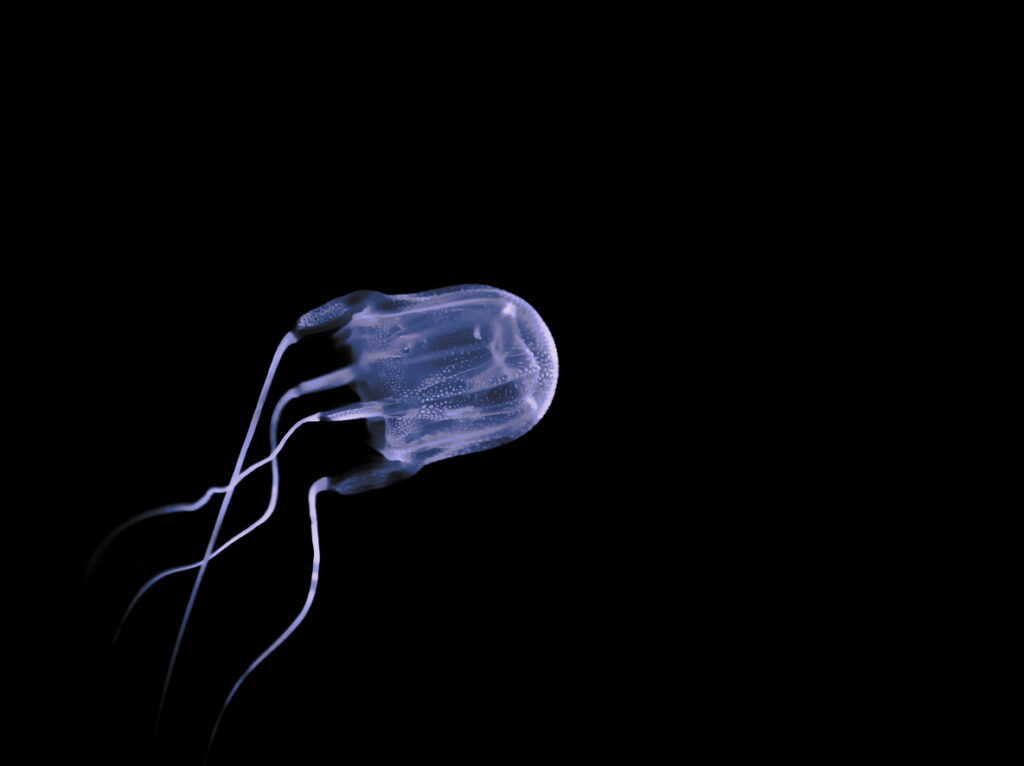
First up on our quiz was the box jellyfish. And while everyone knows that most jellyfish will sting when they feel threatened, this species is a bit different.
Box jellyfish are believed to be the most poisonous fish in the sea. But the main reason that they’re so dangerous is because of their appearance – or lack of. These jellyfish are so transparent that they’re almost invisible if you’re not keeping an eye out for one! As the name suggests, they have cube-shaped bodies that set them apart from other jellyfish with their rounded bodies. But the one thing they do have in common with their jellyfish counterparts is that they sting from their tentacles.
The deadly creatures produce incredibly powerful venom in order to instantly stun or kill its prey. Its venom contains toxins that can affect the heart, nervous system and skin cells. They are typically found in the Indo-Pacific and northern Australia regions, living in coastal waters.
Red Lionfish
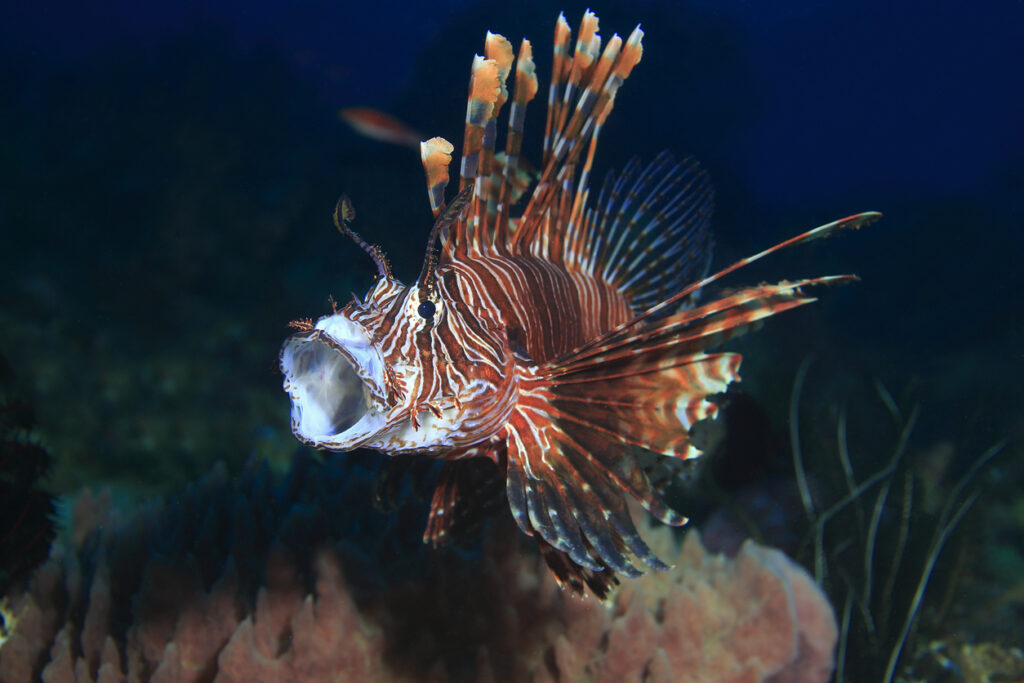
The next poisonous creature in our quiz was the Red Lionfish, but all twelve Lionfish species are actually poisonous!
Lionfish are noted for their venomous fin spines that can produce painful puncture wounds. Native to South Pacific reef ecosystems, this species is classed as invasive because they have so few natural enemies in these regions that they’re free to wipe out large numbers of local reef fish and cause imbalances in the ecosystems.
So, what do they look like? The dangerous fish have enlarged pectoral fins and long dorsal fin spines. They also have bold zebra-like stripes, although the colours of these are different depending on the exact species. For example, Red Lionfish have red, white and brown stripes.
If they’re disturbed, they’ll spread and display their fins to show that they mean business and warn whoever disturbed them to back off. When they’re aggravated beyond this point, they tend to attack by shooting venom from their dorsal spines.
At Blue Reef Aquarium Portsmouth, you can come and safely visit our Lionfish in the Tropical Treasures exhibit!
Stonefish
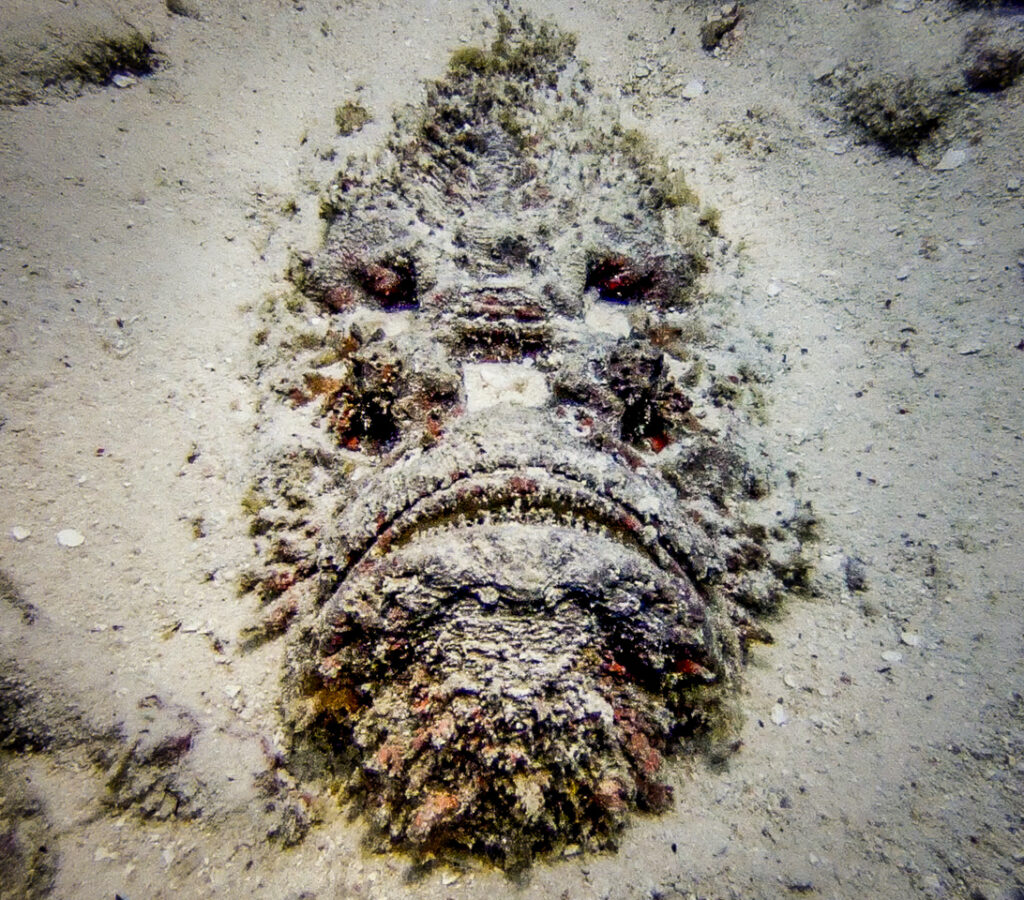
Next up is the poisonous Stonefish that can expertly camouflage against the bottom of the ocean. You could even swim right over one and not think twice about it!
Their brown and orange-coloured bodies blend in with the colours of the surrounding rocks and coral, as does their rocky texture. Stonefish will use their looks to their advantage while hunting and often wait for fish to swim by before picking the right moment to attack and swallow their prey.
Stonefish have 13 spines lining its back that can release venom under pressure, so if you accidentally step on a Stonefish, its dorsal spines will pop up and release venom. However, it’s important to mention that they won’t go out of their way to attack you. They only use their spines defensively, so you’re mostly safe from their venom.
Blue-Ringed Octopus
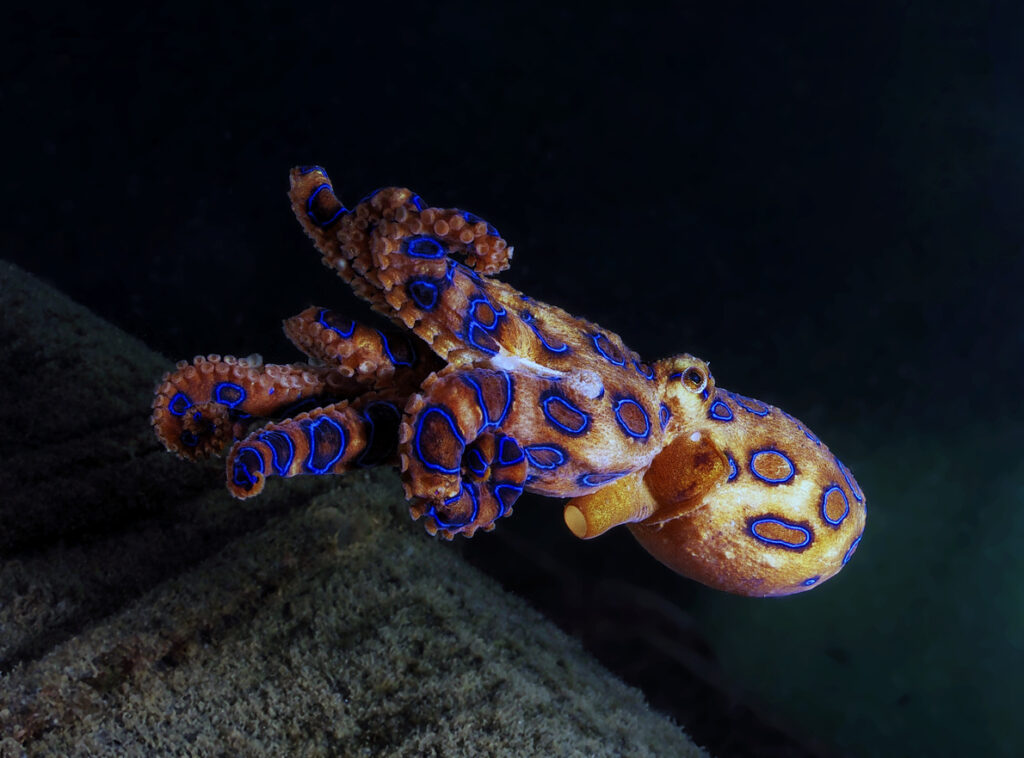
If you’ve taken our quiz, you’ll know that the venom from this octopus can kill in less than 10 minutes. But what makes this fact more impressive is that the octopuses belonging to this species are actually tiny – they’re usually only between four and six centimetres long! They’re the definition of small but mighty.
Blue-ringed octopuses get their name from the vibrant blue rings covering their bodies. But these aren’t there just to make them look nice – they act as a warning and tell other creatures that they can be dangerous. They also only show these off when they feel threatened.
Weever Fish
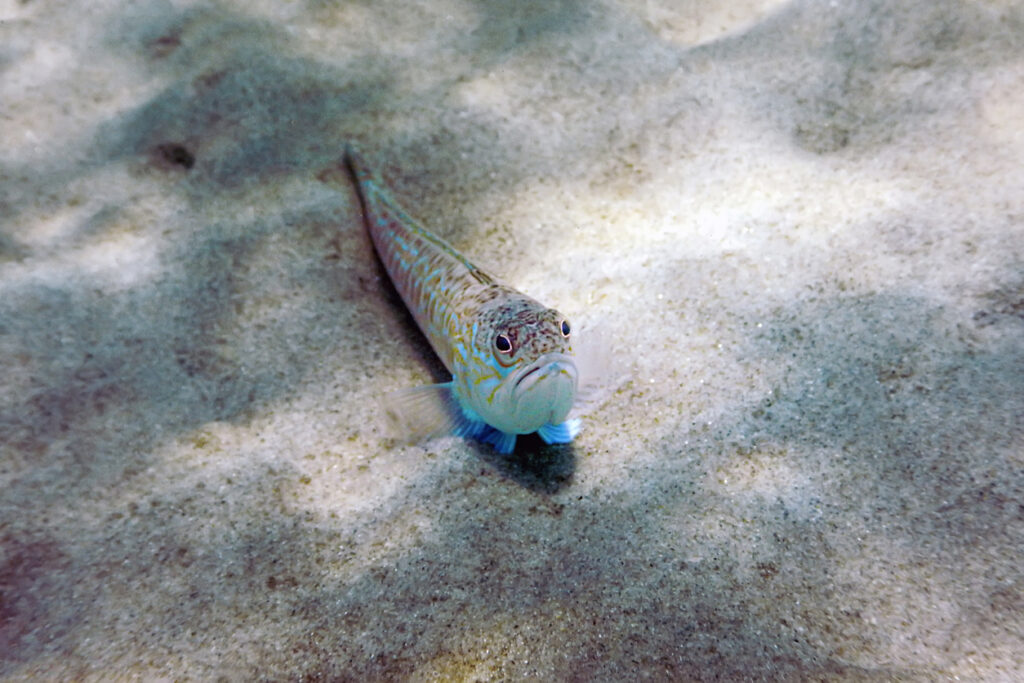
Next up are Weever fish, which are native to waters around the UK. These fish are mostly brown, but you can spot them from their yellow markings and spiny fins. Of course, the fins are poisonous, but a lesser-known fact is that their gills can also produce poison.
This fish is probably the least threatening of all the others in this blog since the pain is meant to be similar to a bee sting. They’re also very non-threatening to other sea creatures and mainly eat a combination of crustaceans, prawns and other small fish. So while they’re definitely poisonous, they’re not necessarily too dangerous.
Pufferfish
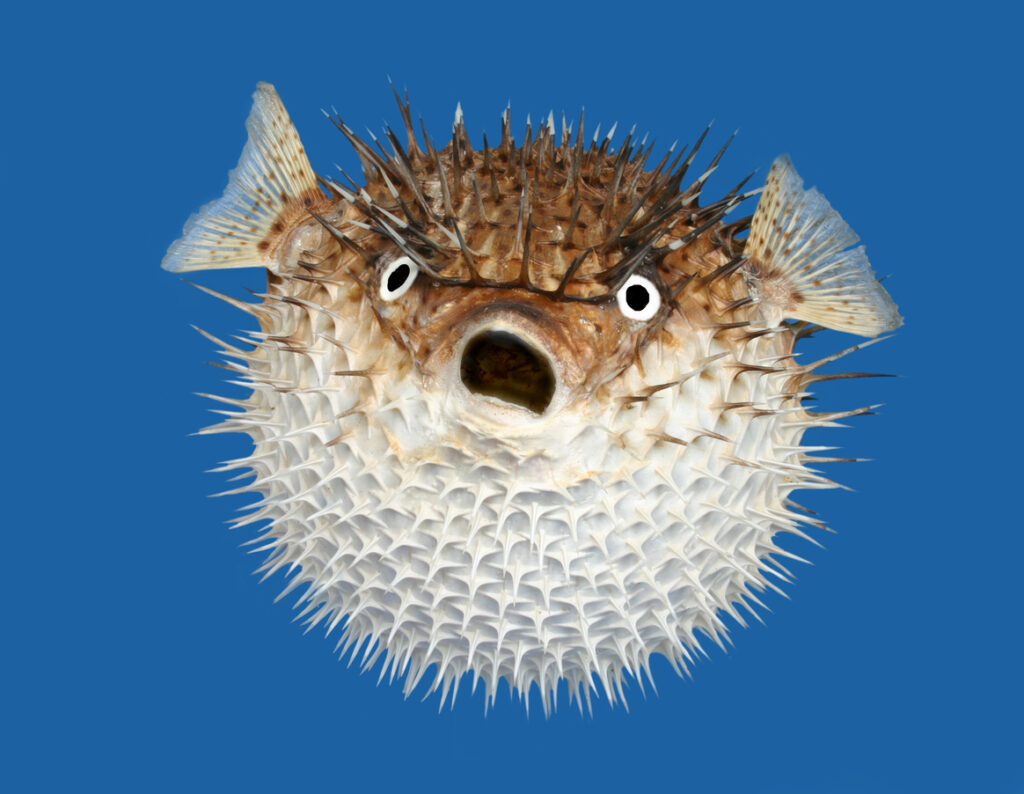
Finally, we’ll end with a much more dangerous fish. Although Pufferfish have a cute appearance, they’re high on the list of the most dangerous fish in the world, so don’t be fooled!
As their name suggests, they can puff up into a ball shape to get away from predators like sharks. But it’s their foul taste thanks to the toxic substance in their skin that really helps them stay out of harm’s way. This poison is also deadly to humans – one pufferfish contains enough poison to kill up to 30 humans!
From Pufferfish to Stingrays, Blue Reef Aquarium Portsmouth is home to quite a few poisonous sea creatures, so why not plan your visit today to see them up close? Don’t worry, they can’t hurt you from behind the glass in our exhibits!
